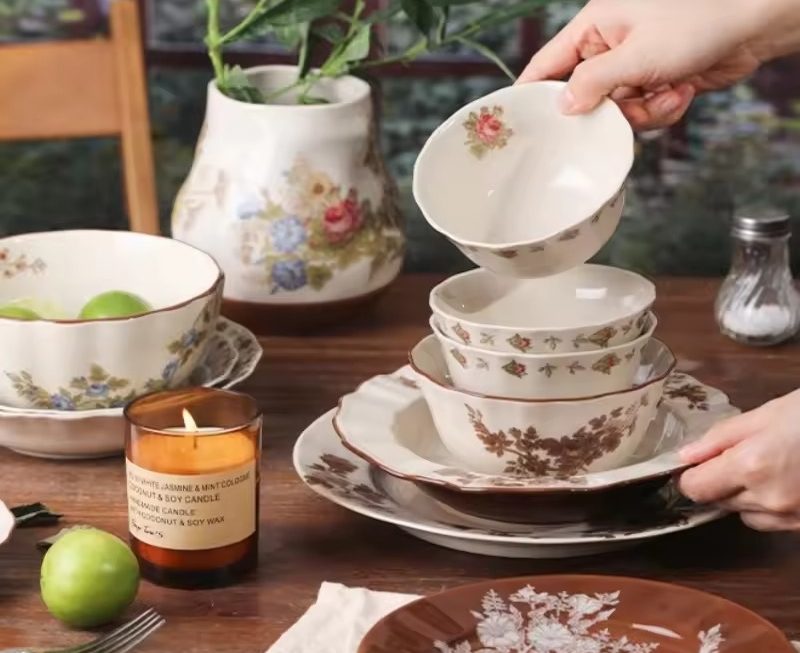 Introduction:
Introduction:
Having adequate water pressure in the kitchen sink is crucial for everyday tasks such as washing dishes, rinsing produce, and filling pots. However, low water pressure can be frustrating and inconvenient. Fortunately, there are several methods to increase water pressure and improve the water flow in the kitchen sink. In this comprehensive guide, we will explore the necessary steps for increasing water pressure, including understanding the materials involved, different types of fixtures, and essential maintenance tips for optimal water flow.
 Several adverse effects:
Several adverse effects:
The low water pressure in a kitchen sink can have several adverse effects:
Inefficient Cleaning: Low water pressure makes it difficult to effectively rinse dishes, utensils, and cookware. This can result in inadequate cleaning, leading to leftover food particles and bacteria on the items, potentially compromising hygiene.
Slow Filling: Filling pots, pans, or kettles can become time-consuming when water pressure is low. This can delay the cooking process and be inconvenient, especially when there is a need for immediate boiling or cooking.
Limited Water Flow: Low water pressure restricts the water flow from the faucet. This can cause inconvenience and discomfort when performing tasks like washing hands, filling a glass with water, or even rinsing vegetables and fruits.
Difficulty in Using Appliances: Kitchen appliances like dishwashers and garbage disposals rely on adequate water pressure to function properly. Insufficient water pressure can lead to ineffective cleaning or incomplete disposal of waste, causing damage or deterioration to these appliances over time.
Potential Pipe Issues: While not always the case, low water pressure in the kitchen sink could indicate underlying plumbing problems, such as clogged or leaking pipes. If left unresolved, these issues can worsen, potentially leading to more significant damage and costly repairs in the future.
Inconvenience and Frustration: Low water pressure in the kitchen sink can cause frustration and inconvenience in daily kitchen tasks. It can make simple activities take longer and create unnecessary hurdles during meal preparation and clean-up.
To address low water pressure in the kitchen sink, it is recommended to check for any blockages or leaks in the plumbing system, clean or replace aerators, and consult a professional plumber if necessary. It is crucial to restore proper water pressure to ensure efficient cleaning, ease of use, and overall functionality in the kitchen sink.
 Introduction to Increasing Water Pressure in the Kitchen Sink
Introduction to Increasing Water Pressure in the Kitchen Sink
Increasing water pressure in the kitchen sink enhances the functionality and efficiency of daily tasks.
A. Importance of Adequate Water Pressure: Sufficient water pressure ensures efficient washing, rinsing, and filling capabilities in the kitchen sink.
B. Benefits of Increased Water Pressure: Enhanced water flow reduces cleaning time, improves efficiency, and provides a better overall user experience.
Materials Required
Gather the necessary materials and tools before attempting to increase water pressure in the kitchen sink.
A. Plumber’s Tape: Plumber’s tape, also known as Teflon tape, is used to secure and seal pipe connections to prevent leaks.
B. Adjustable Wrench: An adjustable wrench is needed to tighten or loosen pipe connections securely.
Assessing the Water Pressure
Before attempting to increase water pressure, it is essential to determine the current water pressure level.
A. Water Pressure Gauge: Use a water pressure gauge to measure the existing water pressure in the kitchen sink.
B. Ideal Water Pressure Range: The recommended range for water pressure in residential areas is typically between 40 to 60 pounds per square inch (psi).
 Methods to Increase Water Pressure
Methods to Increase Water Pressure
There are several methods to increase water pressure in the kitchen sink, depending on the underlying cause of the low pressure.
A. Clear Clogged Aerator: Remove the aerator from the faucet, clean any sediment or debris built up on the aerator, and reattach it to the faucet.
B. Check for Supply Valve Issues: Ensure that the supply valve is fully open, allowing an adequate amount of water flow to the faucet.
C. Inspect Flexible Supply Lines: Examine the flexible supply lines connecting the faucet to the water supply. Replace old or damaged lines that may be impeding water flow.
D. Address Plumbing Issues: If none of the above methods resolve the low water pressure, it may be necessary to consult a professional plumber to address potential plumbing issues.
Essential Maintenance Tips
Proper maintenance is essential for maintaining sufficient water pressure and optimal water flow in the kitchen sink.
A. Clean or Replace Aerator: Regularly clean or replace the aerator to prevent debris buildup that could obstruct water flow.
B. Check for Leaks: Regularly inspect pipes and connections for leaks. Repair any leaks promptly to maintain water pressure and prevent further damage.
C. Clear Clogs: Remove any significant clogs in the plumbing system using appropriate cleaning tools or calling a professional if necessary.
Considerations for Older Homes
Older homes may have additional factors contributing to low water pressure, requiring additional attention.
A. Check for Rust or Corrosion: Inspect pipes for rust or corrosion, which can restrict water flow. Consider replacing corroded pipes to improve water pressure.
B. Update Outdated Plumbing Systems: If the plumbing system in an older home is outdated or inadequate, it may be necessary to update the system to improve overall water pressure.
Pairing a kitchen sink with a faucet:
When it comes to pairing a kitchen sink with a faucet, there are a few factors to consider:
Sink Size and Configuration:
The size and configuration of the kitchen sink will determine the compatibility of different faucet styles. For example, a single-hole faucet is suitable for a sink with a single pre-drilled hole, while a widespread faucet requires multiple holes for installation. It’s essential to ensure that the faucet chosen matches the available sink configuration.
Sink Material and Finish:
Consider the material and finish of the sink when selecting a faucet. The faucet’s finish should complement the sink’s material and match the overall aesthetic of the kitchen. Common faucet finishes include chrome, stainless steel, brushed nickel, and bronze, among others.
Faucet Functionality:
Determine the desired functionality of the faucet. Some kitchen faucets offer additional features such as a pull-out sprayer, touchless operation, or a separate sprayer hose. Consider whether these features align with your needs and preferences when selecting a faucet for your kitchen sink.
Compatibility and Installation:
Ensure that the chosen faucet is compatible with the plumbing system and water supply in your kitchen. The faucet should be easy to install and connect to the existing plumbing without extensive modifications.
Budget and Quality:
Determine your budget for the sink and faucet combination. Keep in mind that higher-quality faucets often come with better durability, functionality, and warranties. It’s important to strike a balance between your budget and the desired quality and features of the faucet.
By considering these factors, you can choose a kitchen sink and faucet combination that not only suits your functional needs but also enhances the overall aesthetic of your kitchen.
 Conclusion
Conclusion
Increasing water pressure in the kitchen sink is essential for optimal functionality and efficiency. By understanding the materials involved, assessing water pressure, and employing appropriate methods to address low water pressure, you can significantly improve water flow. Regular maintenance, such as cleaning or replacing the aerator, checking for leaks, and addressing plumbing issues promptly, ensures consistent water pressure in the kitchen sink. With these tips in mind, you can enjoy improved water flow and a more enjoyable experience while performing daily kitchen tasks.



